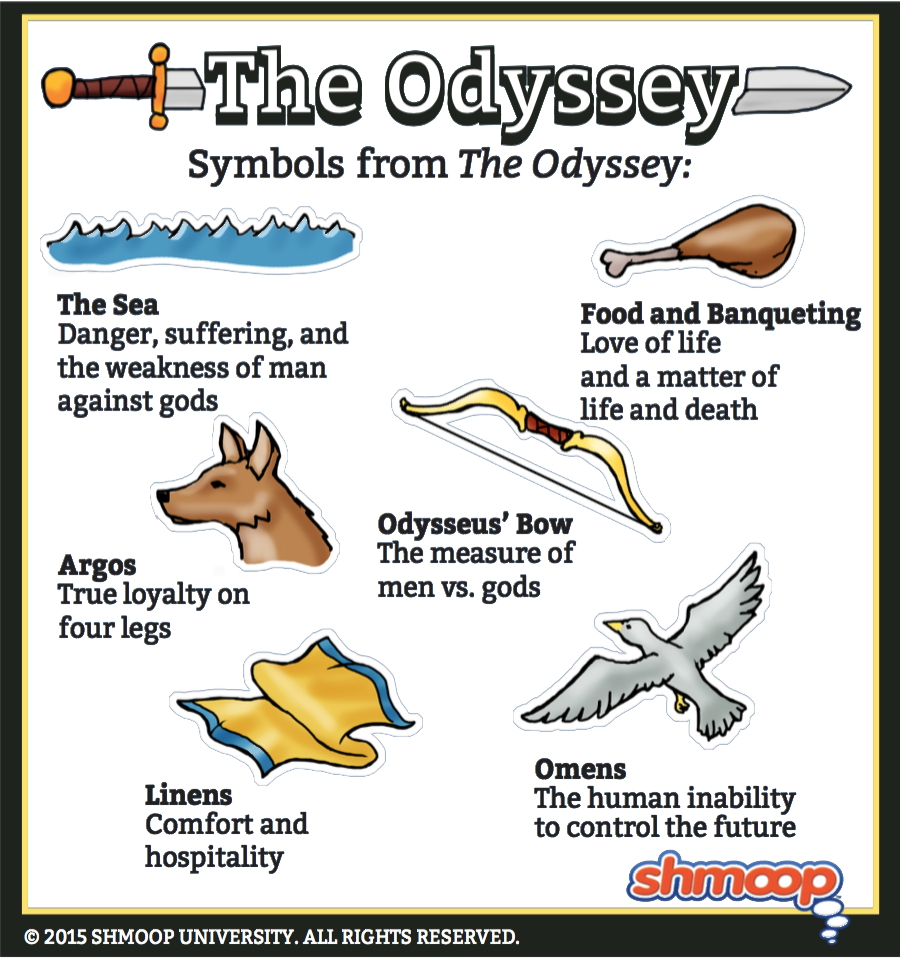Symbolism, Imagery, Allegory

(Click the character infographic to download.)
If you can't just go to Target to pick up some 30% off extra-long sheets for your dorm room bed, cloth takes on whole new meaning. When you're carding, spinning, and weaving every inch of it yourself, it becomes super valuable—and you're not going to waste any of it, which is why most Greek clothing was just made up of cloth wrapped and tied around the body.
In the Odyssey, linens—blankets, sheets, and clothing—are associated with hospitality, and even more particularly with women's hospitality. And that makes sense. Women's primary activity was making cloth. You know how you don't go anywhere without your smartphone? It was like that, only instead of a smartphone, substitute distaff: a tool used to spin raw material into thread.
A quick list should prove our point: Penelope insists on decking beggar Odysseus out in nice cloth, telling her maids to "give him a wash and spread a couch for him here, with bedding and coverlets and with shining blankets, so that he can keep warm as he waits for dawn of the golden throne" (19.317-18); Helen gives Telemachos a dress for his wife to wear; and Nausikaa—who's off at the stream doing her laundry—gives Odysseus clothing to wear. Sure, men talk about cloth, too. Menelaos emphasizes how many blankets his palace has. But who do you think made all those blankets? Not this great Greek hero.
And, of course, Penelope is the master of linen-symbolism. She spends all her time weaving a shroud for Laertes and then unweaving it at night. We're not experts or anything, but anyone who's ever had to deal with a family's laundry can probably identify with this: a mountain of cloth that's never, ever done.
